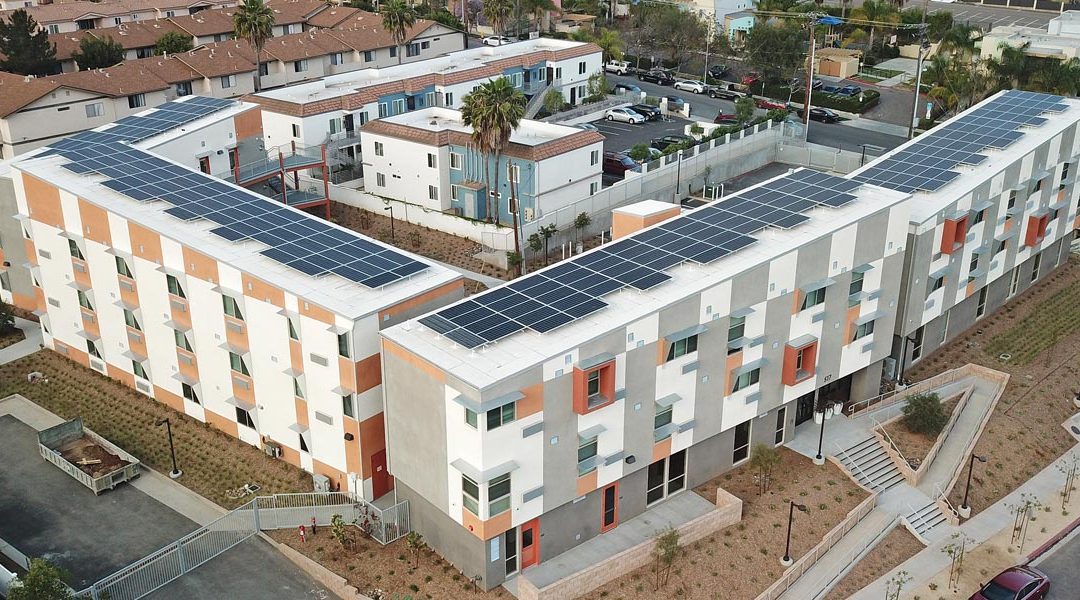When I meet with fellow building industry professionals, I always tell them I am the cheapest guy in the room. It is my job to be.
As the director of sustainable design at National Community Renaissance (National CORE), one of the nation’s largest affordable housing developers, I am meticulous about delivering the best possible housing for the least cost, so that every precious dollar of funding for affordable housing we have counts.
I know how high the stakes are for Californians. Even before the coronavirus pandemic wreaked havoc on our economy, 1.3 million low-income households across California lacked access to affordable housing. Now, a historic increase in joblessness has brought many more families to the brink.
One essential part of the solution is for California to build many more homes, much more quickly than we currently do. Getting the policy right to ensure that the homes we build today are designed affordably, and with the long-term financial interests of Californians in mind, is critical.
Thus, as the California Energy Commission prepares a building code update that will determine how California builds for years to come, a debate rages: What is more affordable – building all-electric homes powered by renewable energy or building with gas?
At National CORE, we are agnostic to fuel choice: all our building decisions are guided by economics. We carefully consider our technology choices to ensure affordable building costs, low long-term maintenance costs, and the lowest-possible utility bills for the households we serve.
Based on economic considerations, all of our developments currently under construction – as well as those we plan to begin building this year – will be built all-electric.
We’ve found that by cashing in on the energy-saving benefits associated with new, highly-efficient electric technologies – especially heat pump water heaters and heat pump boilers – we can cut building costs and lower utility bills. Today’s heat pumps use three to four times less energy than gas furnaces, and because heat pumps provide both heating and cooling, builders save on the cost of installing air conditioning systems, which are essential to keeping vulnerable Californians safe as temperatures rise with climate change.
In today’s market, by building all-electric, developers also save on the cost of installing pipelines to connect homes to the gas system – which typically adds nearly $9,000 to a newly constructed home. The city of San Francisco found that, when all expenses are incorporated, building all-electric lowers construction costs by just under $5,700 for the average single-family home.
And unlike homes that retain the use of gas, all-electric housing developments are also better positioned to cash in on the utility-lowering benefits associated with rooftop solar. Our newly-opened senior community, Day Creek Senior Villas, in Rancho Cucamonga generates all of the energy needed to meet residents’ electricity needs on-site, producing big savings that are passed along to the seniors we serve. Their electricity bills are in the $6-a-month range – the basic metering charge – and they have no gas bill.
At National CORE, our operational savings for typical developments range between $20,000 and $40,000 per year. These savings, over a 30-year time period, can add up to millions of dollars – funds that can be invested in enhanced resident services such as after-school programs for children or health and wellness activities for seniors.
These savings are likely to increase in coming years as gas prices rise. In just the past year in National CORE’s portfolio, we have seen a 10% increase in the cost of gas. With this in mind, we are committing to leveraging all available opportunities to electrify our existing portfolio.
For the moment, National CORE has found that building all-electric is the best decision for our communities. Some argue that standardizing all-electric new construction would add costs or slow the housing market. But I do not believe they have done their homework – because in our experience, that is not true. If we can make all-electric buildings work with affordable housing budgets, where every dollar counts, anyone can.

About the author
Tim Kohut
Director of Sustainable Design
![]()
Joining National CORE in 2017, Tim works closely with the development and construction teams to understand and implement energy efficiency strategies and standards that lead towards the State’s Zero Net Energy targets. He is a Certified Energy Analyst (CEA), Home Energy Rating System (HERS) Rater, and Building Performance Institute (BPI) Certified Energy Analyst. He combines his architectural, energy modeling, diagnostic skills, with his knowledge of construction to identify pathways for increasing energy efficiency without driving up costs. He has spent more than 20 years designing, building, and consulting on affordable housing projects throughout Southern California, and he has been involved in the design and construction of more than 1500 units of high performance multi-family housing. He was coordinating architect for the first affordable housing project in Southern California to install a photovoltaic system (Hart Village, 2003) Principal Architect for the first multi-family housing project to achieve LEED for Homes Platinum level certification in Southern California (Casa Dominguez, 2009), the first commercial scale project to include a gray water irrigation system in Los Angeles County (Casa Dominguez, 2009), and the first project in Southern California to install a gray water system for indoor water reuse (Cedar Springs, 2016). Additionally, Tim is a Certified Access Specialist (CASp), and helped craft the Los Angeles Community Development Commission’s Universal Design Standards (used in all affordable housing projects), and the California Tax Credit Allocation Committee’s “Enhanced Accessibility Standards”. He has presented locally and nationally on issues of energy efficiency and accessibility. Tim teaches classes focusing on sustainability and sustainable architecture at Woodbury, USC, and Cal Poly Pomona.


Recent Comments